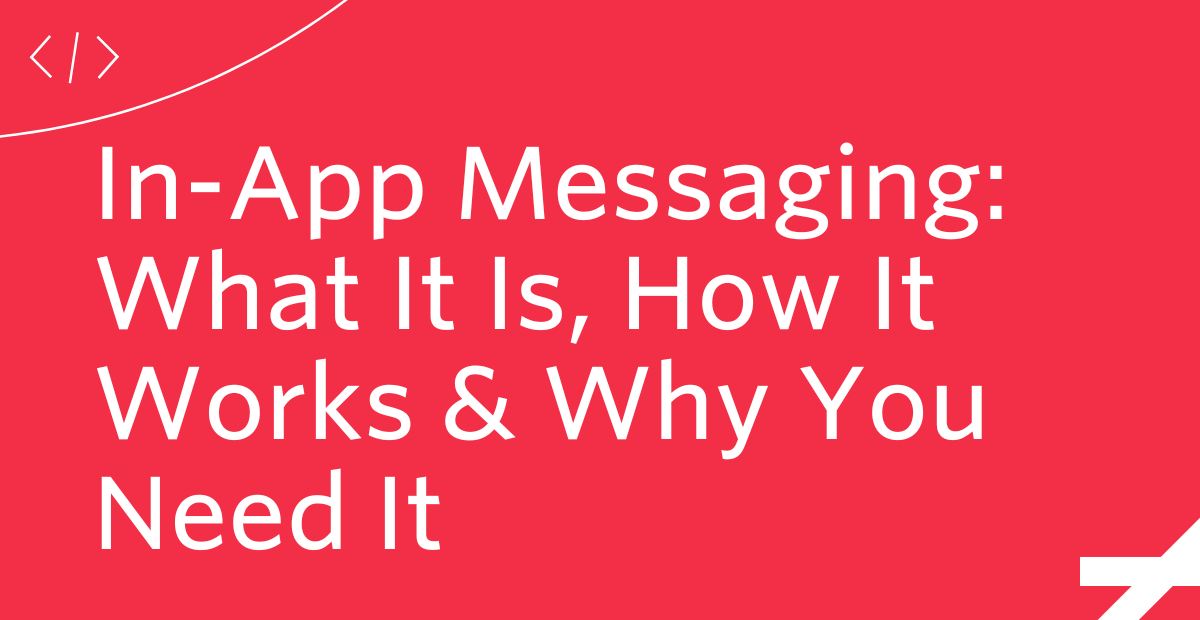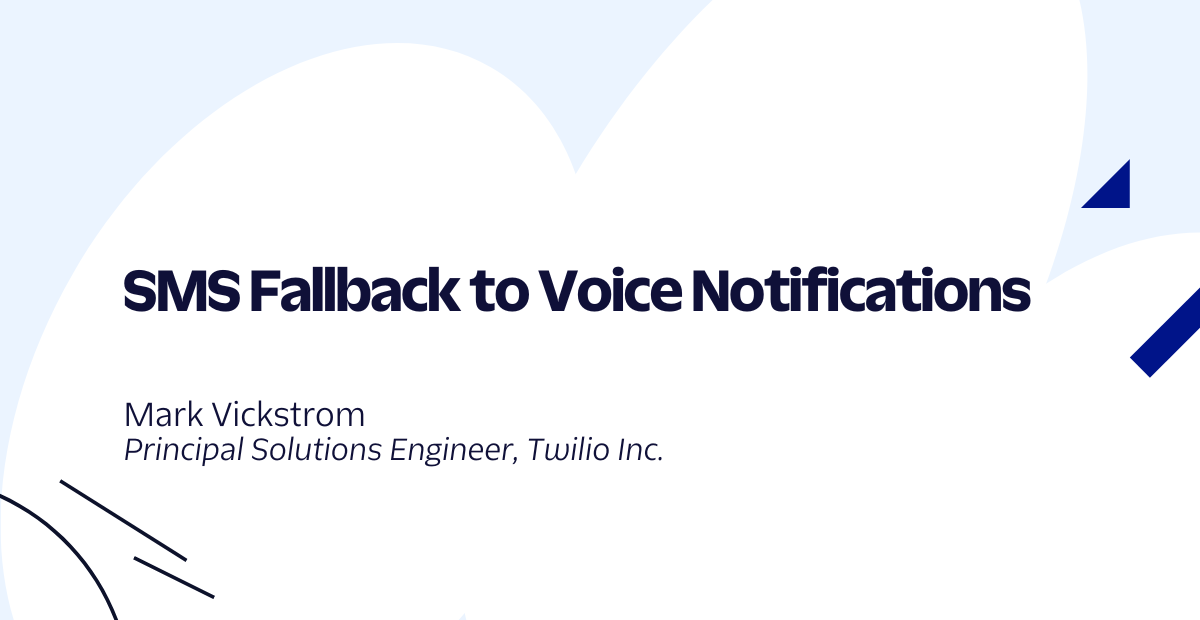In-App Messaging: What It Is, How It Works & Why You Need It
Time to read:

In-app messaging is one of many communication tools you can use to drive customer engagement and conversions. Haven't heard of it before?
You're not the only one. This under-utilized marketing tactic is finally getting some of the love and attention it deserves. That's why you're here (now) reading this, right?
Marketers can use in-app messaging (aka in-app notifications) with email, SMS, chatbots, and push notifications to enhance the user experience. But what is in-app messaging, and how is it different from push notifications? Do you need both?
What is in-app messaging?
In-app messaging lets you interact with users actively using your application with relevant messages. This might include encouraging someone scrolling through your blog to subscribe, or you could suggest a handbag that goes perfectly with the scarf your shopper just dropped in their shopping cart.
You design your in-app messages to trigger based on your customers’ interests and behaviors. Then, your in-app messaging logic targets users with personalized messages at just the right time.
For example, when a user doesn't finish the checkout process, you quickly send them a 10% off coupon to nudge them across the finish line. Or, when a returning gamer opens your app, you direct them to the newest released level.
In-app messaging vs push notifications: What's the difference?
While sometimes used interchangeably, in-app messaging and push notifications aren’t quite the same. Here are the key differences:
- In-app messaging: Messages users who have your app open and actively using it.
- Push notifications: Notifies users currently not using your app with a banner or lock screen notification.
The messages you send with push notifications are smart (or should be) and don't have the same contextual power as in-app messaging. For example, you might send a push notification to someone driving to work, and that alert might get buried under a pile of emails and texts before they ever unlock their phone.
On the other hand, in-app messaging is typically impossible to miss. Your user has their phone open and actively using it—and you know exactly what they're doing at that moment. That might be playing a game, messaging a friend, adjusting their settings, or browsing your store. With that context, you can send them the perfect message.
And lastly, while users must opt in to receive push notifications, that's not the case with in-app messaging. When a user has your app open, you don't need permission to send them a message within the application. It's best practice to collect their preferences and let them tailor the app experience, but you have a whole new range of opportunities based on your permissions.
Commons types of in-app messages and use cases
You can use a few different types of in-app messages depending on your brand, user, and engagement activity:
- Top banner: Have a banner notification come down from the top of the screen. This might only take up 10%–20% of the screen's total real estate and should include a call to action (CTA) and button.
- Bottom banner: Have a notification ribbon pop up from the bottom of the screen.
- Chatbot: Have a chatbot open a conversation based on the user's behavior. For example, if they've scrolled halfway through a blog post, your chatbot might encourage them to subscribe to your newsletter.
- Notification: Have a notification sent to your user if they have an account or log in, and you provide a notification center. Alert them with the classic red sticker indicating they have a new notification.
In-app message use cases
Here are some examples of in-app messaging use cases:
- New feature: Explain new app features or things you've added to your website or products.
- Promotion: Show your users the latest sales, discounts, freebies, and coupons.
- Onboarding: Walk your users through the product with in-app messaging relevant to whatever stage they’re in the onboarding process. A new user will need different tips and advice than your returning user, who might need to know what's new with the app since they last logged in.
- Service update: Let your user know if someone has responded to their email query or once their order has shipped.
- Announcement: Share relevant company news that your users need to know. For example, you might notify them if you've acquired a company or are hosting an event.
- Help: Notice that a user has been stuck on a page or revisiting a certain documentation article? Offer to connect them with a real-life agent via live chat, email, or phone call.
- Retention: Recognize when a user is about to leave your app and provide the right CTA to help them stick around.
These aren't the only things you can do with in-app messaging. Your brand and audience will have different needs you can address with this communication method.
For example, if you're a nonprofit, you might use in-app messaging strategies to show visitors volunteer opportunities near them. And if you're a healthcare provider, you might remind app visitors to call 911 if there's an emergency.
What are the benefits of in-app messaging?
In-app messaging has a few unique advantages over other marketing channels:
- No opt-in required: Take advantage of the fact that your users are in your app, and you don't need permission to message them here. While you'll want to learn their preferences, you won't need permission to send your initial messages.
- Perfect timing: Send the best message at the best time with all the context you need to engage your users.
- Personalization: Create unique notifications for your users based on their preferences and behavior.
- No dependencies: Don't worry about Facebook being slow or email landing in the spam folder—the communication happens within your app.
- Brand control: Customize everything, from the message to how it appears, for complete control over the brand experience.
How does in-app messaging work?
In-app messaging works by engaging users actively using your application. You set up the triggers that determine if and when you should message a user.
For example, you might send users a message if they use a new product tool or put them on an onboarding series if they made a recent purchase.
Test this logic and see how your users engage with your in-app messages. If some messages have lower engagement rates, try to optimize them or swap them for another CTA.
Real-life in-app messaging examples
See how real-life businesses use in-app messaging and chat to drive cross-channel conversations:
Properati boosts lead conversions and sales with Twilio Chat
Properati is an Argentina-based real estate platform that provides a better data-backed experience for realtors and crucial insights for homebuyers. With Twilio, the company added in-app chat capabilities for its users to start conversations with realtors. The chat captures critical information about the users so that the application can better serve relevant content.
Chime uses Twilio to deliver an improved customer experience
Chime is a digital banking solution, and its app provides a seamless mobile experience for its users. Using a mix of messaging, phone, and chat solutions provided by Twilio, Chime is better able to serve customers and improve user satisfaction.
7 In-app messaging best practices
While in-app messaging might be simple to launch, it takes a bit of know-how to get right. Here are a few best practices to keep in mind when building out your communications solution:
- Personalize your messages: Add a name and keep your users’ preferences in mind to give your communications a more authentic feel.
- Segment your users: Segment your users based on location, preferences, customer journey, and behaviors to ensure everyone doesn’t get the same in-app messages.
- Engage with behavior: Send a message based on your users' actions or behaviors instead of a random in-app message. For example, when they open a new tab for the first time.
- Use visuals: Add pictures, videos, and emojis to your messages (where appropriate) to add life and color.
- Focus on a CTA: Tell your users what to do with your message. For example, if you want to show them a new product feature, tell them how to get started.
- Test your messaging: Show your messages to test groups to get feedback on whether they'd engage with those messages and if they find them helpful or annoying.
- Start a conversation: Don't just talk at your users—talk with them. This is where in-app chats can be powerful.
Drive better in-app engagement with Twilio Conversations API
Add chat experiences to your application or browser using Twilio’s Conversations API. It takes your in-app messaging from a notification to a conversation, letting you communicate with your users, solve problems, provide solutions, and create relationships.
Ready to get started? Browse our Twilio Conversations documentation to see quick-start guides, sample apps, SDKs, and more. Then, sign up for a free Twilio account to launch your first demo app.
Related Posts
Related Resources
Twilio Docs
From APIs to SDKs to sample apps
API reference documentation, SDKs, helper libraries, quickstarts, and tutorials for your language and platform.
Resource Center
The latest ebooks, industry reports, and webinars
Learn from customer engagement experts to improve your own communication.
Ahoy
Twilio's developer community hub
Best practices, code samples, and inspiration to build communications and digital engagement experiences.

